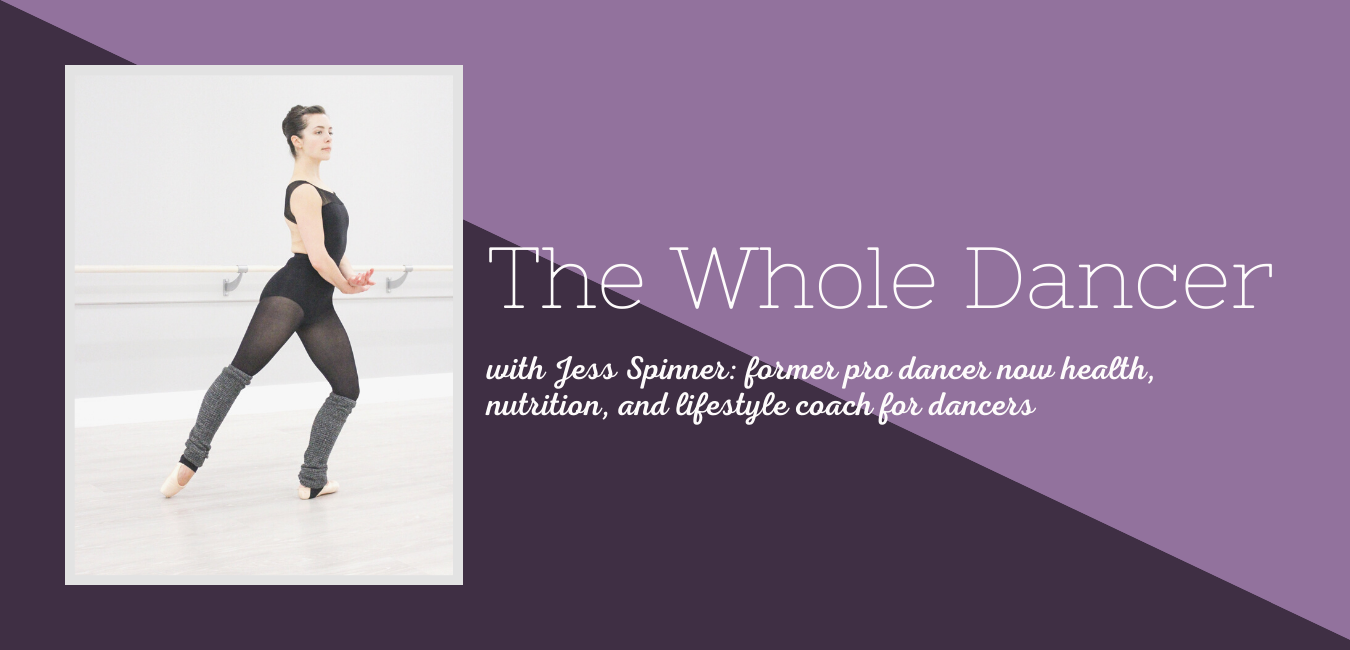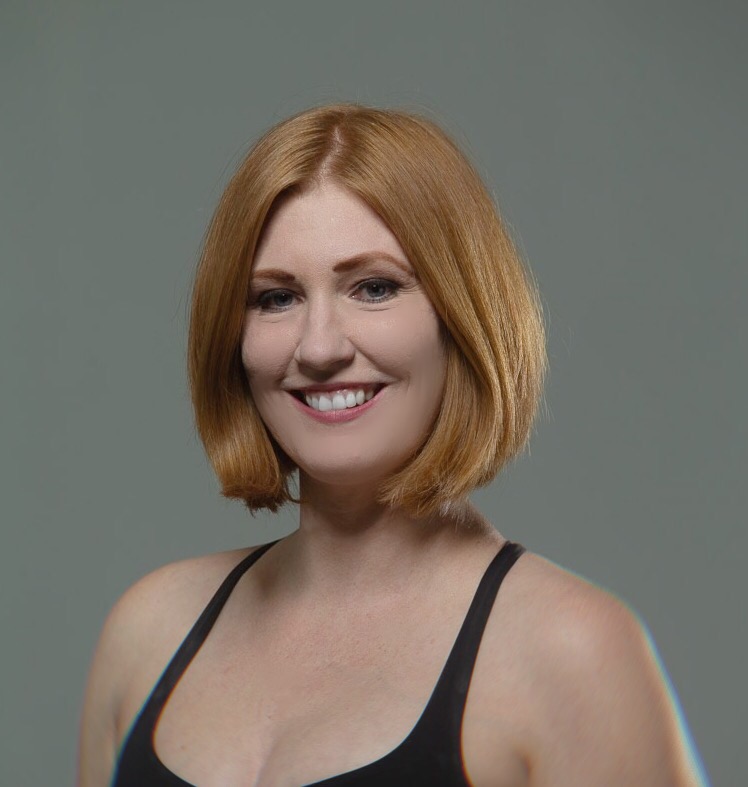An Incredible Addition to Your Support Team
To have greater, more sustained success in dance, it’s so important to bring supporting people onto your team. Many of the dancers I work with are looking for additional support to use their bodies to the highest level. While nutrition, health, and lifestyle coaching covers a lot of bases, I am not an expert in effective cross training and creating an impactful movement support plan outside of the studio. Luckily, you can reach out to an expert like Leah Bueno for that exact need.
I came across Leah on Instagram (@thepilatesdancer). Honestly, one of my favorite things on IG is finding inspiring, dance-support accounts to follow and share. If you’re looking for an approach that can help you excel in new ways, check out Leah’s offerings. She will help you find greater confidence in how you use your instrument. That kind of shift is valuable beyond words.
Prior to developing your brand, The Pilates Dancer, you were an accomplished performer and teacher. What made you decide to move towards the dance wellness side of the field? How was your transition?
I think this was a natural progression from my dance upbringing. My mentor Maria Vegh was recruited, along with David Howard, early in her career to be co-director of the Harkness House in New York City. Their mission was to bring in kinesiologists and physical therapists to the studio to help create a modern approach to dance training. I grew up hearing about anatomy in the studio and fell in love with the science of dance. After teaching for professional companies/schools for over a decade, I was interested in continuing my mentor’s legacy, so I received my full certification in Pilates. From there, I went on to become a Post-Rehab Specialist, Instructor Trainer, and member of the International Fascial Research society. I love to learn!
What are the most common trouble spots you see dancers dealing with? Why do you think this is?
Definitely the areas in our bodies that require the most movement when dancing. Dancers often have issues with their hips, low back, knees, and feet. When we require a joint to move beyond its normal range of motion, it is important to have an equal amount of strength. If this balance is not achieved, we start seeing injuries and reduced performance in that area.
What are your thoughts on massage tools, such as foam rollers, tennis balls, massage guns, etc. Do you have recommendations for dancers on these items, or do they even need them?
Manual therapy is an art form. I think there can be a lot of benefit from self-release techniques if used properly. Unfortunately, dancers often use these types of tools too aggressively or for the wrong purpose. I personally am a big fan of cupping! In my experience, myofascial decompression is a really valuable tool versus using a hard roller which can add compression.
What are your thoughts on stretching tools? Foot stretchers, stretch bands, etc. Do you have recommendations for dancers on these items, or do they even need them?
This is where I draw a line in the sand! These are outdated and dangerous tools. They have been used by dancers, including myself, for decades. However, it comes with a big cost to your physical health. These types of tools stretch the connective tissue that is made to protect your joints. If these protective capsules get stretched out, there is no way to repair the damage that has been done, and this can lead to injuries, osteoarthritis, and even a shortened career. There are much better methods, and I advise staying away from these tools.
Why do you think stretching is the first instinct dancers have before dancing? Why isn’t this first instinct actually warming up the muscles?
I think part of it is the culture of dance. This is what we were taught to do and what we see from our peers. The other reason is aggressive stretching can make you feel really stiff the next day. When you stretch too far, which is common among dancers, our body needs to take a day to heal. This gives the sensation of being tight, and the obvious solution is to stretch. A better solution is to make smaller mobility gains each day and actively warm your muscles up before dancing.
Take us through an ideal pre-show warmup you might prescribe to a dancer.
Pre-show is all about preparing for what you are about to do. Every warmup should start with 10 minutes of actively warming up your body. This should include full body movements at a moderate pace so your core temperature is slightly elevated.
Then I like dancers to think about what is involved in their performance. If they are doing mostly slow adagio movement, some stabilization exercises are helpful. If you have a powerful allegro performance, it is important to wake up the muscles that create these movements. Single leg jumps, squats, and planks are a great way to fire up the bigger muscles.
You talk a lot about how stretching too much can sabotage your flexibility and strength goals. Can you share a personal story of how focusing too much on stretching backfired for you?
Yes! I was not flexible when I was a teenager. I didn’t know it at the time, but I was growing and that was affecting my flexibility and I stretched ALL THE TIME. Unfortunately, this led me to become very weak. Any overstretched joint is a weak one. Because I became hyper-mobile in certain areas, other parts of my body had to make up for this instability and became tight. I didn’t understand what was going on, and this cycle of “too loose” then “too tight” continued throughout my career.
How does the work you do help dancers struggling with body image?
As dancers, we are in the business of people talking to us about our bodies. It is important for us dancers to feel good in every part of our skin. If we feel like our feet are not good enough or our extensions are not what we want them to be, this can greatly affect how we view ourselves. It makes me really sad when people tell dancers that they cannot make improvements in their bodies.
I tell my dancers that if someone tells you “you can’t” they are showing you their limitations not yours! It is really empowering to know that your physical goals can be met with the right tools. I want all dancers to love the image that they see in the mirror.
Where can people find you and learn more about your work?
Feel free to reach out to me on Instagram @thepilatesdancer. My website is www.thepilatesdancer.com, and you can check out my past articles for Dance Magazine at https://www.dancemagazine.com/u/leahbueno.
You mention on your Instagram page that you are an advocate for dancers weight lifting. What advice do you have for dancers who are afraid of weight lifting? Where is an easy place to start?
If you are afraid of lifting weights because you think that you will bulk up, DON’T BE. I have worked with Fitness Professionals for Post-Rehab services, and these people work really hard for their muscles. If you would like to start lifting weights, I recommend starting light and feeling comfortable with what you are building.
In the summer, what advice do you have for dancers who have a break? How long should they rest? Do they need to stretch every day?
Summer is a great time to reset before the next season. This can look different for everyone. The main thing I advocate for is that you will not lose what you have gained if you take a break. Studies have shown that professional athletes have better seasons when they have a longer off-season. Dancers are not great at taking breaks. I tell my dancers to listen to what their bodies and minds need.
Do you have any stories about comments on your own flexibility and how you dealt with them during your career?
When I was dancing, I put a lot of focus on my flexibility. Because it was not something that I had naturally, a lot of my self-worth as a dancer revolved around my flexibility. Looking back, I wish I would have celebrated other parts of my dancing.
At The Whole Dancer, we talk a lot about how long-lasting change takes time. When you are working with a dancer, how long does it really take to see change in their flexibility and strength?
If someone has unused potential, that can happen quickly. For some people, they see immediate results with strength and flexibility because all they needed to do was learn how to use the strength and flexibility that they already had. However, lasting flexibility gains take 6 months, and the right kind of strength can take months to develop. That may seem like a long time, but it is really short when you think about how long your career as a dancer is.
Can you share a success story about how your work has helped dancers through injury recovery?
Yes, one of my favorite stories is from a dancer I worked with at The Joffrey Ballet. He had access to amazing PTs, but he had a chronic hip injury that was possibly going to ruin his career. During our first session, I noticed that he was so mobile in his hips that every time he did a Grand Battement, his hips were slightly subluxating. This is when a bone moves partially out of the joint. It was really slight, but I am trained to see the little things. We worked on building deep strength in the hip and correcting his movement. By the third session, his pain was gone, and we continued to build his strength from there.
A lot of what I do is figuring out the root of injuries that keep coming back. He was simply putting a bandaid on the problem, and I was so happy that we could find the root of his problem!
If you’re in need of support, check out Leah’s resources and get in touch!

